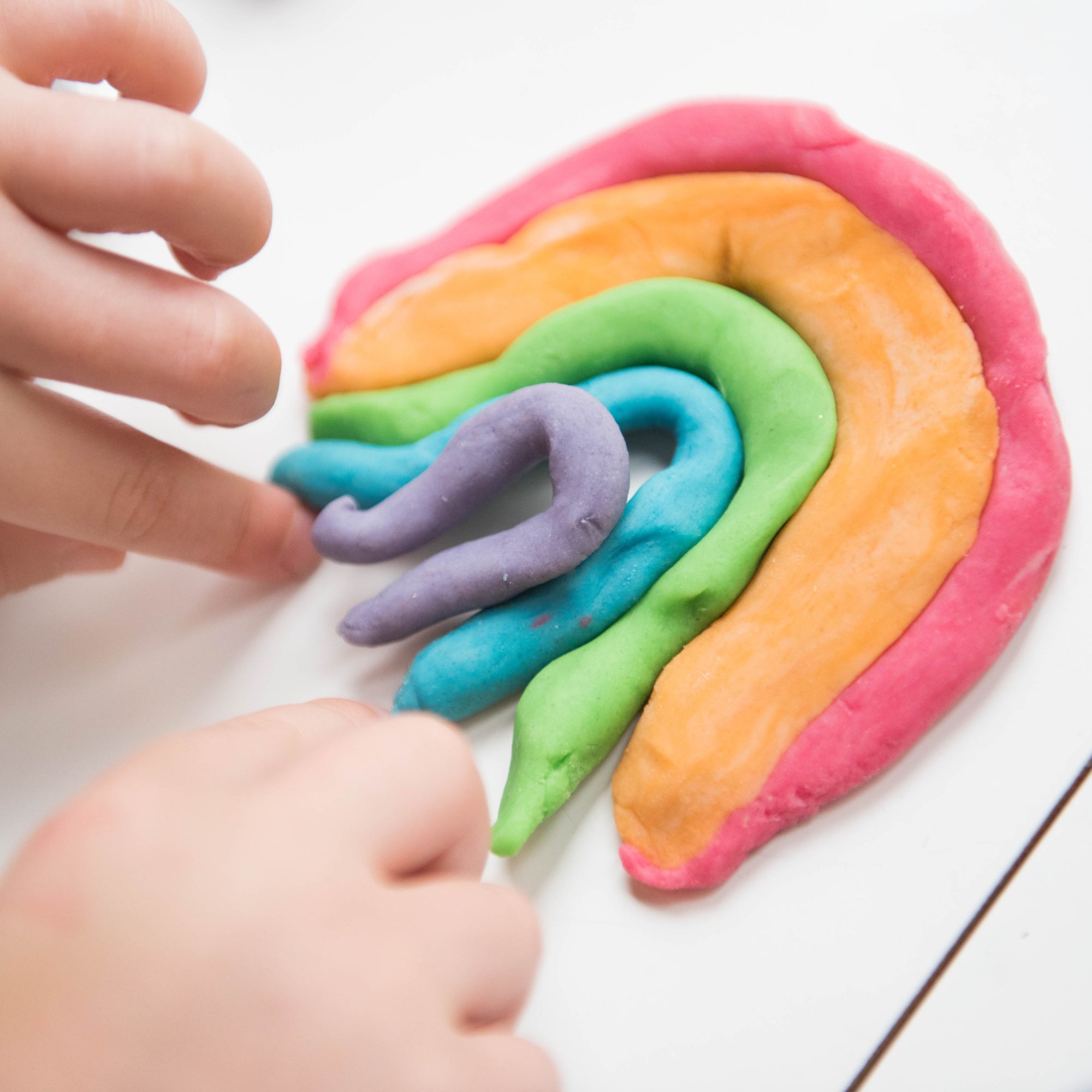Playdough has been around since the 1930’s. Originally designed as a wallpaper cleaner, this soothing sensory and creative play experience has come a long way. Since its initial release, play dough has been adapted by kindergartens, schools and homes all around the world. It’s often used as a “starter activity” for children who are new to a setting (such as the first day of school) because it provides a calming/relaxed experience for children (similar to a stress ball).
According to the Ministry of Education, “Playdough is a safe and soothing material and provides children with a great sense of security - it cannot be ‘done wrong’ and is a satisfying sensory experience”.
Below I’ve listed a few of our favourite ways to use playdough, and have also included a recipe we’ve used for years that has never failed.
Fun ways to use play dough:
- Play dough nature garden - this is probably our favourite thing to do with play dough. It’s also perfect for when your dough is getting older and you’re almost ready to compost it. Go into the garden or visit a nearby park and gather leaves, twigs, flowers and petals, acorns and anything else interesting. Then once back home, encourage your kids to decorate a base of play dough with their nature treasures. You can display them inside for a few days and even research some of the items.
- Shapes, letters and numbers - one of my favourite activities to do with young children who are learning to write their name is to mould the letters out of play dough. You can do this by rolling bits of play dough into small sausage shapes and then forming the letters you need. Children can then have a go at making their name themselves. This is especially beneficial for tactile learners. You can then move on to other letters in the alphabet, shapes and numbers.
- Learn to spell sight words - this is the same concept as above, but you can also introduce letter cutters. Children can roll out the dough and use the letter cutters to make sight words that they may be struggling with.
- Play dough fossils - this is such a fun activity to do with kids who are into fossils or dinosaurs. Our favourite way of doing this is with sea shells collected from the beach. It’s also a great way to explain how fossils are preserved.
- Colour mixing - make two colours of play dough such as red and blue, place them on the table and ask your children to knead them together. Observe the colours mixing and then discuss the end result (red and blue make purple).
- Practice patterns - this is another great way to use two colours of play dough but you can also make patterns repeating the same shapes with play dough cutters.
- Learn basic fractions - Playdough is the perfect medium for teaching first fractions as it’s easy and safe for kids to cut it up when using a child friendly knife. We like to make a ball and then cut it in half first and then into quarters.
- Early knife skills - Playdough can provide children with opportunities to practice knife skills. It’s soft enough to cut easily and can be made into anything the imagination can come up with. It’s also a great time to teach children how to hold a knife and where to place their fingers when cutting.
- Imaginary play - following on from the above, play dough provides children with ample opportunities to create and make. From cafes and restaurants, to the Easter Bunny’s chocolate factory or Santa’s candy shop. Playdough can provide hours of creative play.
Best ever play dough recipe
- 1 cup flour
- ½ cup salt
- 2 tbsp oil (we use coconut oil as the texture is so good)
- 1 cup warm water
- 1 tsp cream of tartar
- A few drops of food colouring
- Optional a few drops of essential oil such as peppermint of lavender
Mix all the ingredients together in a saucepan and heat until it forms a dough. Allow to cool, then knead while still warm. Store in an air tight container.

